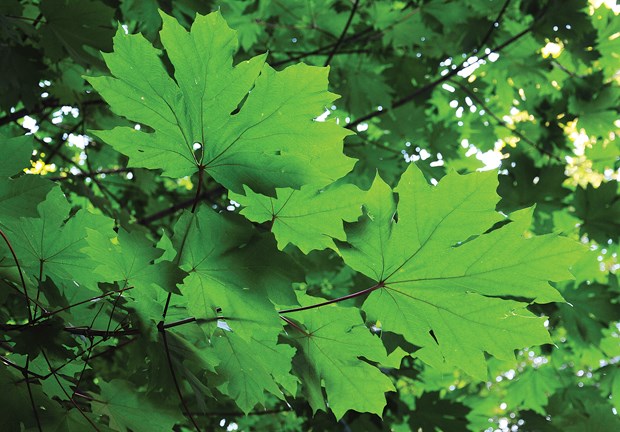Does your garden reflect your political views?
To help figure that out, I went through a purely metaphysical and existential exercise to complete the hypothetical political colour of your garden. I searched each federal political party's website for their principles, not necessarily their constitution or policy,
although there is some overlap in that regard. Each political party advocated their principles in relation to "issues" of concern for Canadians. Due to extensive writings from each party it is not possible to include every single party principle in this column.
Let's start with the Conservative Party of Canada's and what their garden might look like based on their party's principles. The Conservative belief in "the equality of all Canadians" was tempered by their "goal of building a national coalition of people who share these beliefs and who reflect the regional, cultural and socio-economic diversity of Canada." Therefore, a Conservative garden would include plants from all regions of Canada, as long as those plants held the Conservative belief, meaning maple trees - yes, but cedar trees only if there was a species native to Eastern Canada. "A belief in our constitutional monarchy," would assure that a Conservative garden would include an English rose and perhaps clematis as long as the clematis behaves. The Conservatives also believe, "Responsible government must be fiscally prudent and should be limited to those responsibilities which cannot be discharged reasonably by the individual or others." Meaning Conservatives will sell you competitively priced plants but they likely won't help plant them. They also believe "the greatest potential for achieving social and economic objectives is under a global trading regime," which means the plants in their garden may be supplied from international sources. And pesticides will be sold regardless of longterm health effects in the environment - to assure good international trading relationships. And under Bill C-51 some plants may be monitored or undergo a background check while living in the garden.
A Liberal Party of Canada garden, based on their party's principles, might look something like this. The Liberals believe "a long-term vision is important for a sustainable society at home and abroad;" therefore, their garden would be designed to mature in 20 or 30 years, unlike the average of 10 years. This would mean wide spacing of primary plants with lots of filler in between until the main plants mature. Liberals are stated as being "compassionate and responsible social stewards, committed to providing a good and fair balance between the economy and social justice." Accordingly, their garden would contain marijuana for personal use, but not for commercial sale. And plants would have to be obtained from fair trade sources. A Liberal garden might include the sugar maple (Acer saccharum), which most closely resembles the leaf on the Canadian flag. Liberals also believe: "Social, economic and environmental issues are interconnected and society is strengthened when we take action on all three." Therefore, their garden would allow the use of organic or environmentally friendly fertilizers and pesticides as long as those products were manufactured in Canada. And since "every person has the right to be heard and represented in a democratic society," according to the Liberals, plants in their garden would be spaced so that each plant had its own room to grow and could be easily seen from anywhere in the garden.
An NDP Party of Canada garden, based on their party's principles, might look something like this. The NDP espouses, "Human and civil rights, including equal rights for LGBT citizens, people with disabilities, workers and aboriginals." Therefore, an NDP garden may include clematis in the gay pride colours, a wheelchair ramp, social workers to help everyone understand what the purpose of gardening is, and partial ownership of the garden by Aboriginals under treaty. Gardeners in the NDP garden would be paid higher than the private sector gardeners next door, so you could be assured of a high-quality, unionized gardening crew to care for the plants. Marijuana would be allowed in their garden, as long as you take a one-week course on how to properly use medical marijuana. Plants in the NDP garden would undoubtedly include vegetables and some chickens, given that the B.C. NDP pioneered the visionary Agricultural Land Reserve. Given that the NDP believes in a "moderate form of socialism," their gardens would likely be run by a crown corporation, cooperative or community group. And seniors, children and working families would all partake equitably in the work and fruits of an NDP garden's labour.
And let's not forget the Green Party whose party principles are so far reaching, pragmatic and based in fairness and interconnectedness that we may not realize how beautiful a garden could be until we stepped into theirs.
Todd Major is a journeyman horticulturist, garden designer and builder, teacher and organic advocate. [email protected]



